You’ll find the original Rancho Santa Fe community nestled between golf courses and tennis clubs in sunny southern California. The version of it that I know best, however, is in the suburbs of Shanghai: this themed Chinese subdivision, modelled on the posh Californian suburb, features the same Mission-style homes with red tile roofs and the same lush green lawns encircling driveways mounted with basketball nets. There’s at least one car in each garage, terracotta planters overflowing with flowers, and a clubhouse with tennis courts and swimming pools to soothe the stress of a long day at the office. And just in case the connection isn’t clear enough, China’s neighbourhood even has a familiar name: its developers called it “Rancho Santa Fe”.
But as I sat in a beat-up Buick not long ago, snarling through bumper-to-bumper traffic in a slow trek from Rancho Santa Fe, in the suburbs, to Shanghai’s city centre, it was clear that Chinese developers had done more than duplicate California’s Mediterranean-themed architecture. McMansion communities like Rancho Santa Fe have also helped recreate the golden state’s car headaches and endless sprawl, thanks to planners and policymakers who have repeated the urban design sins of developed countries. For China, California dreaming has turned into a nightmare.
In the wake of economic reforms in the 1990s that helped set off the largest urban migration in history, China had the rare opportunity to embrace cutting-edge city-building approaches as it expanded its skyline. It could have avoided the mistakes that made Los Angeles into the land of gridlock, or bypassed the errors that turned the banlieues of Paris into what one American planner calls “festering urban sores”.
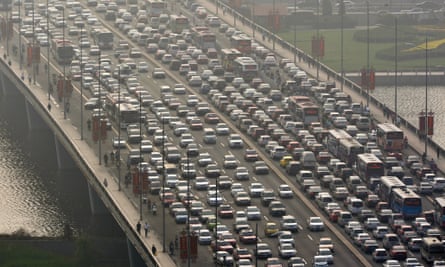
But China looked back instead of forward. Over the past decade and a half, the nation’s developers and government officials have replicated discredited urban planning templates, importing ideas that were tested, failed and long since abandoned in places like Europe and the US. Planning authorities have committed “essentially all the mistakes that have been made in the western world before”, says Yan Song, director of the programme on Chinese cities at the University of North Carolina at Chapel Hill.
She recalls how 10 years ago, a delegation of planners from the US convened with Chinese officials, who were then working on eliminating Beijing’s cycle lanes to make room for more cars. “The American planners were saying, ‘Don’t do that, please! We’ve done that, we have made that mistake. Don’t follow us,’” says Song. “But at the time, when you have that kind of modernisation, people love cars – so unfortunately the planners there didn’t listen.” (A few years later, Beijing backpedalled, and since 2010 it has been working to bring back the bicycles.)
Besides expunging cycle lanes, China’s leaders have also inflicted Dallas’ car culture and Atlanta’s endless sprawl on their country. The “towers in a park” housing blocks championed by Le Corbusier and others have found a second life in cities from Shanghai to Suzhou – never mind their mixed-results elsewhere. The desire to escape sardine conditions in these superblocks, where greenery often consists of sickly shrubs gasping between six-lane roads, has in turn multiplied the number of land-devouring compounds like Rancho Santa Fe. Homeowners there have contributed to the gridlock and pollution, owing in part to another problematic template that’s enchanted China’s planners: Houston-style financial districts packed with towering glass boxes that are inhospitable to street life, all but abandoned in the evenings and far from people’s homes.

These ideas have worked about as well in China as they have everywhere else. Which is to say congestion, smog and competition for scarce resources are on the rise. A 2011 IBM survey found Beijing and Shenzhen had the most miserable commutes in the world, after only Mexico City. Cars now generate a third of the hazardous air pollution in Beijing caused by fine particles known as PM 2.5. And a report from the World Bank released this past March found China’s urban expansion had put the country’s available farmland “close to the ‘red line’ of 120 million hectares” – also known as “the minimum necessary to ensure food security.”
This is worrying China’s citizens, too. Not far from Rancho Santa Fe, a gated compound called Fontainebleau Villas offers palatial homes on ground its previous tenants used to grow food. “That land is wasted – they should be planting rice,” griped a neighbour on my visit there several years ago. He lived in an older, far more modest house just down the road and harvested a variety of vegetables on a plot no larger than a mattress.
China’s “deja vu design” binge has been driven in part by policies that provide incentives for the real estate equivalent of pawning jewellery to pay bills. Local bureaucrats have financed their operations to a large extent by hawking property to developers, who in turn expand the suburbs farther and farther from the urban core. Last year, land sales accounted for 55% of local governments’ revenues, according to China Daily. In 2010, that figure reached as high as 80% for some cities, the paper reported.
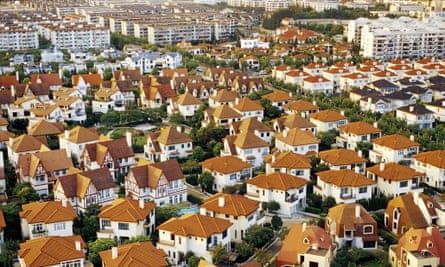
“In China, the government owns the land and sells the land to the developer, and that’s the last dollar that the local government gets off that piece of dirt. So then what do? They have to sell another piece of dirt. They have to plan for a bigger city,” says Chip Pierson, a senior principal with the Dahlin Group who has spent more than a decade working on architecture and urban design projects in China. “This is why they’re coming up with schemes about a technology city in the middle of God-knows-where.”
While government officials are motivated to sell off land, developers have every incentive to fill it with opulent single-family homes like those at Rancho Santa Fe or Fontainebleau Villas. Six-bedroom houses command higher prices than modest apartments, and help builders quickly recoup their costs.
But China’s politicians haven’t been completely blind to their planning problems. In 2006, the Communist party outlawed the use of land for luxury villas and tried to encourage more efficient housing with a policy that required new communities to build at least 70% of their units smaller than 90 square meters. Villa construction slowed for a year or two, but Pierson says the ban is “barely mentioned anymore”. (The third phase of Rancho Santa Fe was finished two years after the guidelines were announced, in 2008.) Sometimes, says Pierson, developers will circumvent the rule by striking a deal with local leaders, who may allocate some portion of the land for villas so the firms can raise enough money to complete the mandated superblocks. At other times, companies just cheat. Developers know each square meter of a home’s outdoor space counts for only a fraction of its actual area, so they’ve been building apartments with colossal balconies that owners can easily wall off to create an extra room.
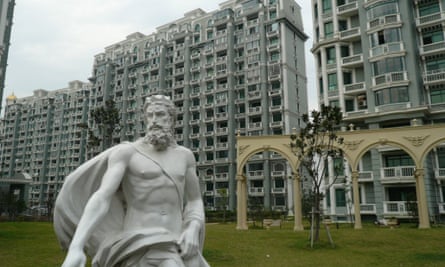
This points to a deeper issue that has allowed deja vu designs to proliferate: China’s bureaucrats and homebuyers are drawn to the same trappings of success that moneyed classes elsewhere have enjoyed. There’s the sense, for example, that to become a financial centre, China must look like a financial centre – which means replicating the plans for the Loop in Chicago or Canary Wharf in London. Businesses want the appearance of modernity that, it seems, only stacked glass boxes can provide. And homeowners want the white picket fence that defines the Chinese dream as much as the American one.
“In a way, it’s the Louis Vuitton complex: ‘because everyone else has a Louis Vuitton, I have to have one, too,’” says Laurence Liauw, author of New Urban China and the principal director of Spada, a multi-disciplinary design firm based in Hong Kong. “We [the Chinese] want to be like everyone else. We want to be like Palm Springs, or Portofino, or whatever is the latest fashionable address.”
“There’s nothing wrong with it,” says Liauw, except that “it comes at a very, very high cost to humanity, to the environment and in resources.”
Third- and fourth-tier cities – smaller metropolises like Wuxi and Yingkou – have been slower to abandon these old, foreign models. But over the past few years, China’s planning authorities have made meaningful progress toward more creative and sustainable urban design solutions.
This spring, China unveiled the national new-type urbanisation plan (2014-2020), an initiative that is almost a reversal of urban planning errors of the past, and an effort to encourage smarter infrastructure. The policy – the first urbanisation scheme led by central government – aims to expand mass transit, increase the number of “green” buildings, control suburban sprawl and generally prioritise the wellbeing of urban dwellers rather than pouring concrete on new parcels of land.
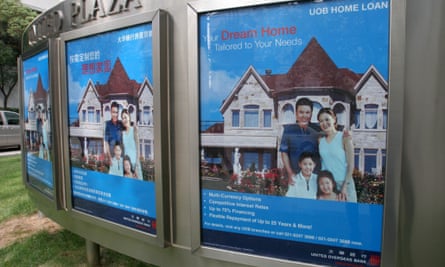
Architects and planners in China believe it will prove to be more than a slogan, and say that even before it was announced, they had already noticed signs of improvement. Liauw says he has watched cities like Guangzhou and Shanghai increase access to public transport; and Shenzhen, like Beijing before it, is restoring cycle lanes. Urban designer Peter Calthorpe, author of Urbanism in the Age of Climate Change, was hired to revise the plan for the built-from-scratch city of Chenggong, a ghost town of superblocks and eight-lane highways that, in 2010, had more than 100,000 empty apartments. Calthorpe is massaging Chenggong’s first design to bring it closer to a template that he and others think China should adopt more broadly: he has championed mixed-use areas that combine homes and businesses; an intimate network of roads to encourage walking and active streetlife; and dense public transit networks that are easily accessed from homes.
And even homeowners’ tastes are evolving. They are no longer as charmed by developments with lavish homes marketed by glossy brochures as “modeled on the sumptuous and classical US West Coast villas”. Instead, “health and livability are now major, major factors that developers are taking seriously into account for how they promote new developments”, says Liauw.
The same top-down decision-making that has led to suburban sprawl and traffic jams could rescue China from its design mistakes by ensuring new ideas are swiftly implemented. “Once they decide to make a change they can really make a change,” says Calthorpe. “So on that level, I’m quite optimistic.”
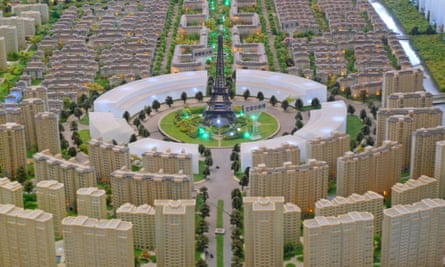
China’s 2011 five-year plan, for example, called for the expansion of the railway system. Three years later, China boasts 100,000km of track, 10,000km of high-speed rail and the longest bullet train in the world. By comparison, Californians have yet to see much progress on the high-speed train between Los Angeles and San Francisco for which they allocated funds in 2008.
As China’s planning authorities consider how they will change course, some are still looking to the west coast of the US. Only instead of being enthralled by California’s gas-guzzling highway system and ever-expanding suburbs, they’re considering a city slightly further north, one well-known for sustainable planning: “They love Portland,” says Song. “Portland is a really great model.”
Bianca Bosker is the author of Original Copies: Architectural Mimicry in Contemporary China
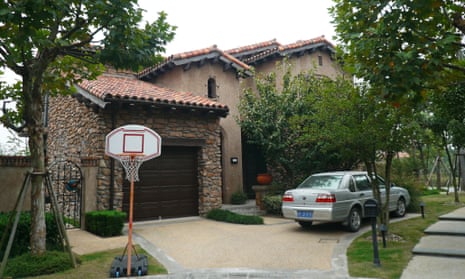
Comments (…)
Sign in or create your Guardian account to join the discussion